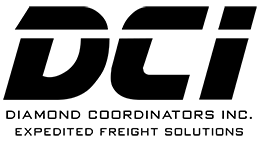Paying Attention to Ensuring On-Time Deliveries can potentially save your freight company on transportation prices and other business costs.

Your freight and logistics business may have large (or small) quantities of deliveries scheduled for shipment every day.
You’re also likely all-too-familiar with the following two concepts of running a successful on-time delivery service:
- Coordinating your shipments in an efficient and effective manner.
- Having an automated system in place to ensure that deliveries make it on time.
Of course, the pinnacle of juggling all of the behind-the-scenes details is saving on business costs as best as you can.
Ultimately, there are many logistics behind successfully getting a product pushed out of the warehouse and onto its way to the desired destination.
One goal of freight and logistic companies should be to process items and other related physical goods as quickly and efficiently as possible while maintaining strict adherence to safety guidelines.
Naturally, your business must also find ways to manage the following issues that can arise:
- Potential disagreements with a client or supplier.
- Storage suppliers are another problem professionals in the freight and logistics industry often confront.
- Finding logisticians experienced with reducing warehouse inventory without disrupting customer service.
- Lost shipments put logisticians under enormous pressure.
As your company contemplates some of these real-world scenarios and challenges – it’s also important to consider implementing an ideal supply chain management system. The following section will cover this topic in greater detail.
Figure out Your Supply Chain Management (SCM) System for Your Business
Today’s business market requires more transparency, reliability, and fast delivery estimates than ever before. As a result, supply chain management (SCM) software is essential to many industries to optimize the efficiency and quality of supply chains.
A business can align its resources in the supply chain to minimize friction and produce goods for customers efficiently. A company’s SCM system is often a critical function as it ties together processes both upstream (in the sourcing of raw materials) and downstream (sales, delivery of finished goods).
Different operations need different supply chain management systems to meet their needs. For example, here are two potential routes an SCM system can be utilized:
- Some smaller operations may find traditional SCM tracking systems work as they satisfy the general requirements that they need. They won’t need updated software.
- Still, other operations like warehouse managers and product managers need a more comprehensive managing system to provide quicker logistics and inventory reports.
These same principles could apply to multiple platforms tailored for different industries or business operations. A goal should be found where all stakeholders are satisfied with the given arrangement, criteria, functionality, and cost-effectiveness for everyone involved to benefit from a realistic solution.
The following are some crucial components of typical supply chain software:
- Product management
- Distribution automation
- Inventory management
- Purchasing
- Vendor setup
- Transportation management.
There are many types of SCM systems and software that can help you fulfill the needs and requirements of your freight and transportation businesses’ specific industry needs. Comparing them helps identify the best system for optimizing their operations and making them profitable.
Moving onto the next important phase, figuring out the appropriate ways of building a new efficient and reliable delivery process is the most important part of creating the opportunity for your business to achieve the ambitious goal of delivering shipments on-time while saving on other transportation and business costs.
Build a New Efficient and Reliable Delivery Process
A consensus is being reached by freight transportation providers and shippers, who have warned of the dangers of a linear system that might necessitate the exposure of private information.
It started with the so-called “lob” trucking operation, which knocked one day’s delivery with an overnight trip. Unfortunately, truck drivers and companies have not adapted to this flexible system. It causes inefficiencies for drivers to navigate a 26-hour field trip and customers who may receive spoiled goods.
Companies are now taking advantage of location-based freight transportation systems. The benefits of using location-based freight transportation systems include some of the following items:
- Dispatchers can divert drivers
- It’s possible to reduce exposure to private clients or shipping information.
- More opportunities to reduce emissions by optimizing routes.
Moving on from location-based freight transportation systems, the reach of supply chain movement is growing wider across different borders.
Keeping track of what order should come through which border is becoming a hassle. If your freight and logistics business desires, it may be best to use a location-based freight system such as RFID identification to help monitor these types of orders to secure any border policies and avoid complications that may arise from not using RFID identification.
Conclusions
Regardless of the delivery method used, or the CSM system desired, operational inefficiencies in the logistics and delivery management processes can pose significant problems to any company.
This is why many companies try to use CSM system improvements to ensure tracking each shipment, and the products and other items within that shipment, make it to the desired destination with minimal issues.
It’s also why your business may want to look into a location-based freight transportation system, which focuses on optimizing freight delivery and reducing costs.
Or, if your freight and logistics business is looking for more security if transporting goods over different country borders, you may want to look into using an RFID type of tracking system. RFID’s help businesses avoid border-to-border transportation check-points and help avoid major logistical issues that may arise if not using RFID.
As businesses evolve globally, it has become increasingly difficult to keep track of deliveries because logistics firms don’t account for changes in government regulations as they enter new countries or regions. This causes delays and loss of a customer’s trust because unpredictable political risks can lengthen delivery schedules or result in lost shipments if they have not followed.
Here at Diamond Freight Systems, Inc., we’re continuously updating our existing processes and taking charge of streamlining KPIs.
If you’re looking to improve your freight and logistics process, or even looking for a new freight and logistics company to partner with to get your deliveries shipment on time and with minimal hassles, reach out to us here to get a rate quote. We’ll ask you a couple of easy questions, and in turn, we’ll be able to get a better idea of your transportation needs. Either way, we look forward to speaking with you really soon!
References
“7 Simple Ways to Increase Your Delivery Efficiency.” WorkWave, WorkWave, 21 Oct. 2020, https://insights.workwave.com/industry/logistics-distribution/7-simple-ways-to-increase-your-delivery-efficiency/.
Carroll, Christina. “5 Strategies to Increase LTL Freight Efficiencies and on-Time Performance.” C.H. Robinson Blog, C.H. Robinson Worldwide, Inc., 17 Nov. 2021, https://www.chrobinson.com/blog/5-strategies-to-increase-ltl-freight-efficiencies-and-on-time-performance/.
Dalin-Kaptzan, Zahava. “On Time Delivery: Understanding, Calculating and Improving Your KPI.” Bringg, Bringg, https://www.bringg.com/blog/delivery/on-time-delivery/.
Gehringer, Alan. “On-Time Delivery Kpis: On Time Delivery Goals Examples to Improve on-Time Delivery Manufacturing.” Rhythm Systems Strategy Execution Software Home, Rhythm Systems, 13 Jan. 2022, https://www.rhythmsystems.com/blog/how-to-improve-on-time-delivery-with-the-right-kpis-culture-and-disciplines.
Ho, Lena. “8 Simple Ways to Increase Your Delivery Efficiency.” CmsMart, Cmsmart.net, 12 Jan. 2021, https://cmsmart.net/community/7-simple-ways-to-improve-your-delivery-process-efficiency.
Hubble, Brock. “Effective LTL Freight Strategies.” First Call Logistics, First Call Logistics, LLC, 1 Feb. 2022, https://www.gofclogistics.com/effective-ltl-freight-strategies/.
Rueffer, Belinda, and Christian Beatty. “Transportation Optimization as a Competitive Edge …” Material Handling & Logistics, Endeavor Business Media, LLC., 27 Aug. 2021, https://www.mhlnews.com/technology-automation/article/21173688/transportation-optimization-as-a-competitive-edge.
“Supply Chain Optimization: How to Optimize Freight Flows.” MercuryGate International, MercuryGate, 22 June 2021, https://mercurygate.com/blog-posts/supply-chain-optimization-how-optimize-freight-flows/.
“What Is Transportation Optimization and What Does It Have to Do with Managed Transportation.” GlobalTranz, GlobalTranz, 3 Aug. 2021, https://www.globaltranz.com/what-is-transportation-optimization-and-what-does-it-have-to-do-with-managed-transportation/.
